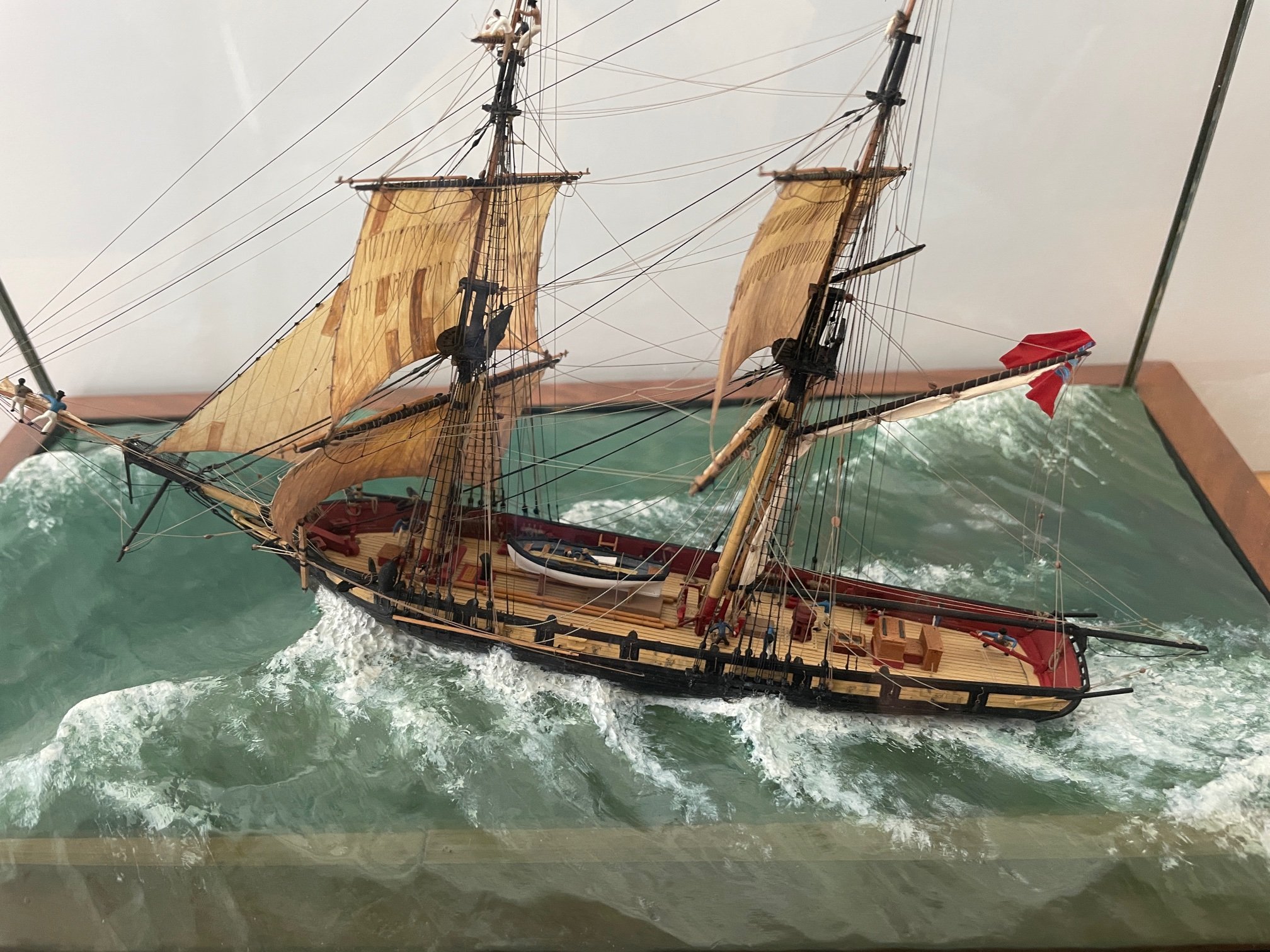Tigress
scratch-built ship model, scale: 1" = 16' — 10" x 13 1/2" x 8" encased
SOLD
Tigress was a Baltimore clipper built at Baltimore around 1801. She was originally named Numa, was sold to the French at Martinique in 1808 and named Le Pierre Cezar, and was finally captured by the British off the coast of Spain! Quite a versatile career for this lovely little vessel. She was 92'-10" on deck, 24' molded beam, and 10'-4" depth of hold. She had headrails and a figurehead up until about 1810.
This model is based on Admiralty draught #3683, and the ship is depicted as fitted for service in the Royal Navy. Much information on fittings, spars, rig, and sails is to be found in the many books published recently about ships of this period. These include Arming and Fitting the English Man of War, by Brian Lavery, Masting and Rigging of English Ships of War, by James Lees, and most important of all for a waterline model, Seamanship in the Age of Sail, by John Harland.
The model is built to the scale of 1"=16', and is almost 10" long overall. The hull is of basswood, with wales, side plank, and deck planking of holly. Most fittings are apple and holly, and spars are of lancewood. The rigging is high-tensile nickel-chromium alloy wire, the only wire capable of holding the precise curves of rigging under the influence of gravity and a strong wind. The sails are of specially treated neutral pH glassine paper. Special formers were used to give the exact curvature needed for each sail. The sails were painted with an oil base paint to prevent distortion from humidity. All reef points gaskets, bolt ropes, and cringles are shown, and these are fastened as well as being glued to the sails. All blocks are' stropped.
The sea is carved from a single piece of basswood, with epoxy used for breaking wave crests and foam along the side of the hull. The entire setting was designed as a sculpture, with the ship working with the sea to produce an active, dynamic scene, with a sense that the ship is moving to occupy the space ahead of it. There are 18 crewmen depicted on board. Six are working in the rigging, with the remainder on deck. The inclusion of a crew is essential for a believable waterline model.
Tigress is depicted with the wind coming from the port quarter, and is just riding up on the crest of a wave. The short, steep waves mean that she is in shallow water, and the waves are running diagonally to the actual direction of the wind because of shoal water to starboard of the ship. The helmsman is giving her some port rudder to prevent her from falling off to starboard.
The fore course, fore topmast staysail, and topsails are set. The topsails have one reef each. Three crewmen are just finishing with furling the fore topgallant, and three more struggle with the jibsail. They have a wild and dangerous ride as the ship works through the sea. The crew on deck are overhauling gear and preparing for another reef to be taken in the topsails.
The model is set in a base of flame figured black walnut veneer. The nameplate is of gold-plated brass. The calligraphy is the artist’s own design, and is acid etched in the plate. The model was made in 1992.



